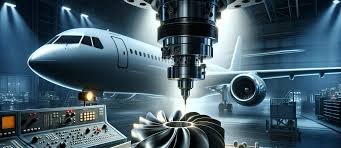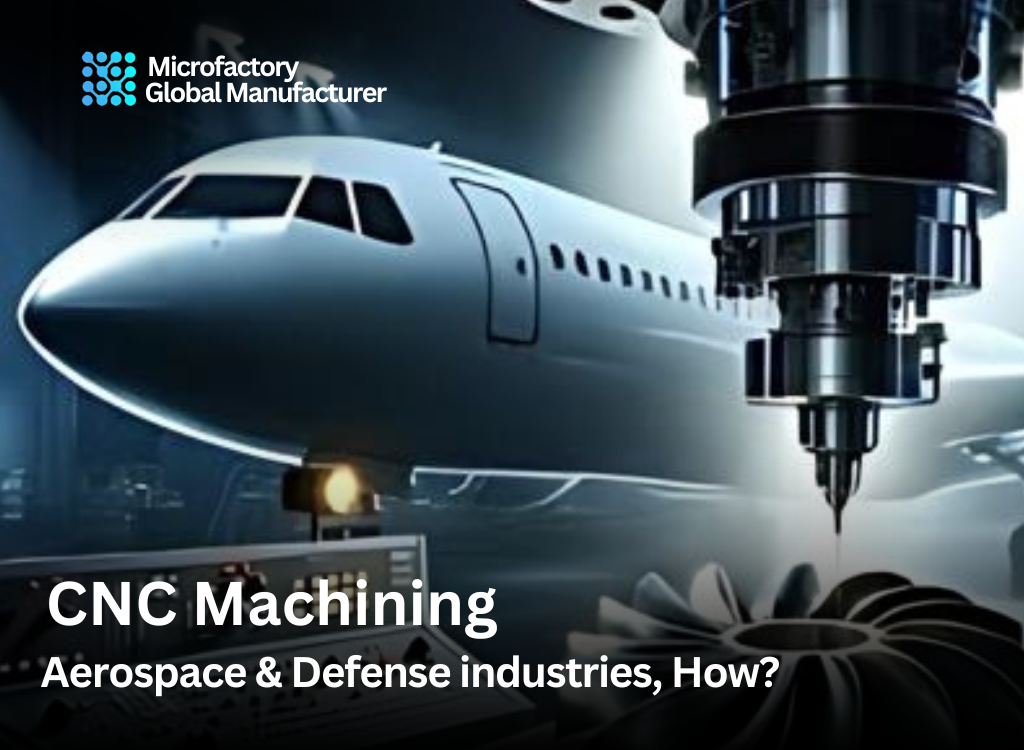The aerospace and defense industries are synonymous with precision, reliability, and cutting-edge technology. Amidst the myriad of innovations, CNC (Computer Numerical Control) machining stands out as a game-changer. It has reshaped manufacturing processes, driving the industries toward unprecedented levels of accuracy and efficiency. But how exactly does CNC make such a monumental impact? Let’s delve into the world of CNC in aerospace and defense industries, exploring the hows and whys of its transformative power.
Understanding CNC Technology
What is CNC Machining?
CNC machining refers to a process where pre-programmed computer software dictates the movement of factory tools and machinery. From grinders and lathes to mills and routers, CNC can control a wide array of complex machinery, producing intricate parts with remarkable precision.
The Evolution of CNC
Originally developed in the 1940s and 1950s, CNC technology has evolved from simple punch card systems to sophisticated digital interfaces. The integration of CAD (Computer-Aided Design) and CAM (Computer-Aided Manufacturing) systems has propelled CNC to new heights, allowing for seamless design-to-production transitions.
The Role of CNC in Aerospace
Precision Engineering
In the aerospace industry, where tolerances are often measured in micrometers, precision is non-negotiable. CNC machines excel in producing components with exact specifications, minimizing the risk of error. This precision is crucial for parts like turbine blades, engine components, and structural elements of aircraft.
Lightweight Materials
Aerospace manufacturers increasingly rely on lightweight materials such as titanium and composites to enhance fuel efficiency. CNC machining handles these materials with ease, offering the ability to create complex geometries without compromising structural integrity.
Prototyping and Production
From rapid prototyping to full-scale production, CNC machines streamline the manufacturing process. Engineers can quickly test and refine designs, reducing the time from concept to completion. This agility is vital in an industry where innovation drives competitive advantage.
Examples in Action
- Boeing and Airbus: Leading aerospace giants like Boeing and Airbus leverage CNC technology extensively. From the Dreamliner to the A380, precision parts machined by CNC play critical roles in the assembly and performance of these aircraft.
- Space Exploration: CNC’s role extends beyond our atmosphere. Components for rockets and spacecraft, such as those produced for NASA and SpaceX, rely heavily on CNC machining for their manufacture.
CNC in the Defense Industry
Enhancing Defense Capabilities
The defense sector demands robust, reliable, and highly precise components. CNC technology delivers on all fronts, supporting the production of advanced weaponry, vehicles, and protective equipment.
Unmanned Systems
Unmanned systems, including drones and autonomous vehicles, are at the forefront of modern defense strategies. CNC machining enables the creation of lightweight, durable parts essential for these systems’ performance and reliability.
Customization and Adaptability
Defense applications often require bespoke solutions. CNC’s flexibility allows for the customization of components to meet specific operational requirements. Whether it’s a unique part for a new prototype or a replacement for an existing system, CNC provides the adaptability needed.
Notable Applications
- Aircraft Carriers: Complex systems and machinery aboard aircraft carriers are crafted using CNC machining, ensuring they withstand harsh maritime environments and operational demands.
- Military Vehicles: Armored vehicles and tanks incorporate CNC-machined parts that enhance their durability and effectiveness on the battlefield.


Benefits of CNC Machining in Aerospace and Defense
Accuracy and Consistency
CNC machines operate with unparalleled precision, producing consistent results every time. This consistency is crucial for maintaining the high standards required in aerospace and defense manufacturing.
Efficiency and Speed
Automating the machining process significantly reduces production times. CNC machines can operate continuously, 24/7, boosting overall efficiency and meeting tight deadlines.
Cost-Effectiveness
While the initial investment in CNC machinery can be substantial, the long-term benefits outweigh the costs. Reduced material waste, lower labor costs, and minimized errors contribute to significant cost savings.
Quality Control
Integrated quality control systems within CNC machines ensure that each component meets exact specifications. This automated inspection process enhances the reliability of the final products.
Challenges and Solutions
High Initial Costs
The upfront cost of CNC machines can be daunting. However, financing options and the long-term return on investment often mitigate this barrier. Additionally, advancements in technology continue to drive down costs over time.
Skilled Labor Shortage
Operating and programming CNC machines requires specialized skills. Investing in training programs and partnerships with educational institutions can bridge the skills gap, ensuring a steady supply of qualified operators.
Maintenance and Upkeep
Regular maintenance is crucial to keep CNC machines running smoothly. Implementing a proactive maintenance schedule and utilizing diagnostic tools can prevent downtime and extend the life of the equipment.
Future Trends in CNC Machining
Integration with AI and Machine Learning
The integration of AI and machine learning with CNC technology promises to revolutionize manufacturing. Predictive maintenance, process optimization, and adaptive machining are just a few areas where AI can enhance CNC operations.
3D Printing and CNC Hybrid Machines
Combining CNC machining with 3D printing capabilities offers exciting possibilities. Hybrid machines can produce complex parts with internal structures that traditional machining alone cannot achieve, opening new avenues for innovation.
Enhanced Connectivity and IoT
The Internet of Things (IoT) allows for greater connectivity between CNC machines and other manufacturing systems. Real-time data exchange and remote monitoring enhance efficiency and streamline production processes.
FAQs
What are the main advantages of CNC machining in aerospace and defense?
- Precision: Essential for producing high-quality components with tight tolerances.
- Efficiency: Automated processes reduce production times and costs.
- Consistency: Ensures uniformity across large production runs.
- Customization: Flexible to meet specific design and operational requirements.
How does CNC machining improve the production of lightweight materials?
CNC machines can handle advanced materials like titanium and composites, creating intricate designs while maintaining material integrity. This capability is crucial for producing lightweight yet strong components in aerospace applications.
Are there any drawbacks to using CNC machines?
The primary drawbacks include high initial costs and the need for specialized skills to operate and maintain the machines. However, these challenges are often offset by the long-term benefits of precision, efficiency, and cost savings.
How is AI transforming CNC machining?
AI enhances CNC machining through predictive maintenance, process optimization, and adaptive control. These advancements lead to reduced downtime, improved accuracy, and more efficient operations.
Conclusion
CNC machining is undeniably a cornerstone of the aerospace and defense industries. Its ability to produce precise, reliable, and innovative components has revolutionized manufacturing processes, pushing the boundaries of what’s possible. As technology continues to evolve, the integration of AI, IoT, and hybrid manufacturing will further enhance CNC’s capabilities. By addressing challenges such as cost and skill shortages, the aerospace and defense sectors can continue to harness the full potential of CNC technology, ensuring a future where precision and efficiency are paramount.


